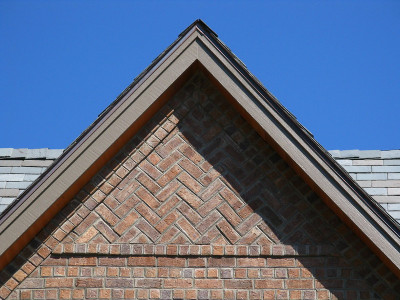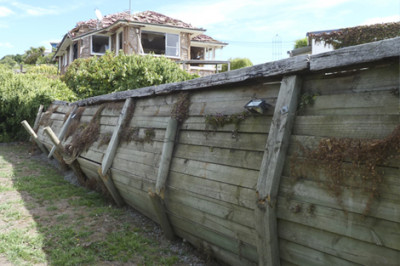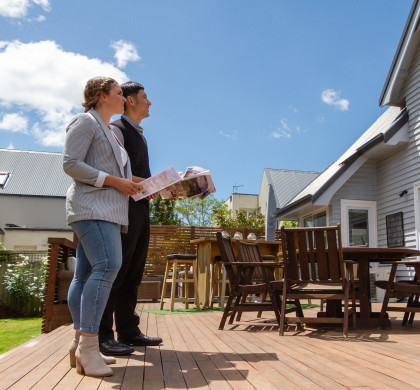Research the risk in your area
Natural hazard risk is a reality of living in New Zealand, but the risks aren’t the same everywhere. It’s important to learn about the natural hazard risk where you live, even more so when you start your house hunting journey. Knowing what types of hazards are present in the area you live, or are hoping to move to, will help you assess the risk to both your property, and you and your family.
Natural hazards that affect New Zealand
- Earthquakes are a risk across almost the whole of the motu and can cause damage to both a house and property. Read on to find out what features of a house to check when you’re thinking of buying.
- Storms and flooding typically pose a higher risk to houses in low-lying areas, or near waterways.
- Landslides often happen as a result of other natural disasters like flooding or earthquakes. Properties near a hill or with steep slopes are more at risk.
- Volcanic and hydrothermal risk affects certain areas in the North Island
- Tsunamis while rare, pose a risk for properties near the shoreline. You should consider your tolerance for risk when looking at houses in these areas.
Where you can learn more
Our section on natural hazards in your area has more information about the nature of hazards in New Zealand. Or you can visit the natural hazards map(external link) on NHC’s Natural Hazards Portal. That provides links to data and tools provided by local authorities around New Zealand. GNS also has some great resources on their website(external link).
Check a property’s features
While some natural hazard risks are area specific, there are also features of a property that will determine how it withstands a natural disaster. Learn about those features below so you can assess properties when you’re open homing.
Chimneys
Chimneys are at risk of falling in an earthquake. The most hazardous chimneys extend above the roofline and are constructed from unreinforced brick or concrete masonry. Brick chimneys built after 1985 were required to have a reinforced concrete flue within the brickwork and be tied to the house framing to prevent collapse.
Check the condition of a chimney by looking for cracks, loose masonry/plaster or broken bricks. If the chimney has a lean or a twist, it could mean it’s unstable.
Roofs
Lightweight and well secured roofs are safer and more resilient to earthquakes and extreme weather.

A brick gabled roof. "gable herringbone brick" by Brock Builders / CC 2.0
Some risky roof features to look out for are:
- Brick gable-ended roofs, which are vulnerable to damage in an earthquake
- Poorly secured heavy roof tiles, that could fall of or through your roof during an earthquake
- Flat roofs, that can be prone to lifting in a storm.
Walls
Unreinforced brick and masonry can be hazardous. If the house was built before 1950 there’s a chance any external brick (such as double brick) and concrete block masonry walls are not reinforced.
The lack of bracing that is common in older homes with framed roofs makes them vulnerable to movement during earthquakes.
Foundations
A house should be well connected to its foundations and those foundations need to be well connected to the ground. If a house isn’t secured to its foundations, it’s more likely to move during an earthquake or flood.
Some foundation types are more vulnerable to damage from earthquakes, like:
- houses with more than one type of foundations, such as a combination of concrete slab foundations and timber piles
- pole houses on slopes with limited foundation bracing
- houses built prior the current Building Code, that do not have connections between the framing and foundation system.
Hills, slopes and retaining walls
Homes on or near a slope are more likely to be affected by landslides. Check the slopes on any property you’re looking at, but also consider whether a landslide on neighbouring land might affect you.
Slopes and retaining walls can crack, move or even collapse, particularly if they’re affected by pressure from heavy rainfall, earthquakes or landslides.
Some warning signs to check for are:
- unusually angled bulging retaining walls
- small slips or rock falls
- subsidence or bulges on or at the bottom of the slope
- tilting trees or fences
- cracks in the ground, retaining walls, driveways, footpaths or other hard surfaces
- ground that’s become waterlogged
- water seepage at the bottom of the slope
- drainage that directs stormwater into or over a retaining wall.

Check retaining walls for signs of damage
You should pay extra attention to any large, structurally important retaining walls. Any retaining walls over 1.5m tall need to have appropriate consents. Check the property file and ask your lawyer to review these.
Look carefully at any retaining walls or slopes that border the property and find out who would be responsible for repairing or replacing those.
Check the geological hazard maps on the Natural Hazard Portal(external link) to check what hazards the property is likely to be affected by, or contact your local council for more information.
House design
Some design features of a house may make it more susceptible to earthquake damage. These include houses:
- built on slopes with large open internal spaces,
- with large windows along one wall and fewer windows on the back wall
- with irregular design shapes or several split levels.
Houses close to water or in low lying areas
A house on low lying land or land close to waterways like streams, rivers, and lakes may be at higher risk of damage from flooding or tsunamis. Check if a house you’re viewing has a low floor level in relation to predicted flood levels. You can get information about flood risk from your local or regional council, and it should be present on a Land Information Memorandum (LIM) report.
Shared-property ownership
There are many types of shared property ownership arrangements in New Zealand, including fee-simple, unit title, cross lease and company lease. After a natural hazard event, shared ownership can raise complex issues when repairing or rebuilding.
Units, townhouses or apartments usually have a shared-property ownership arrangement. Each unit, townhouse or apartment could have varying degrees of damage. Owners might have different private insurers, levels of insurance for their unit or townhouse, or no insurance at all. Before rebuilding can begin, if units or townhouses are physically joined multiple owners might need to agree on the remediation strategy.
We recommend seeking legal advice to make sure you understand the nature of the ownership arrangement and your rights and obligations before you buy shared property. Settled.govt.nz(external link) has more information about the types of property ownership.
Buying a home checklist
Download the checklist